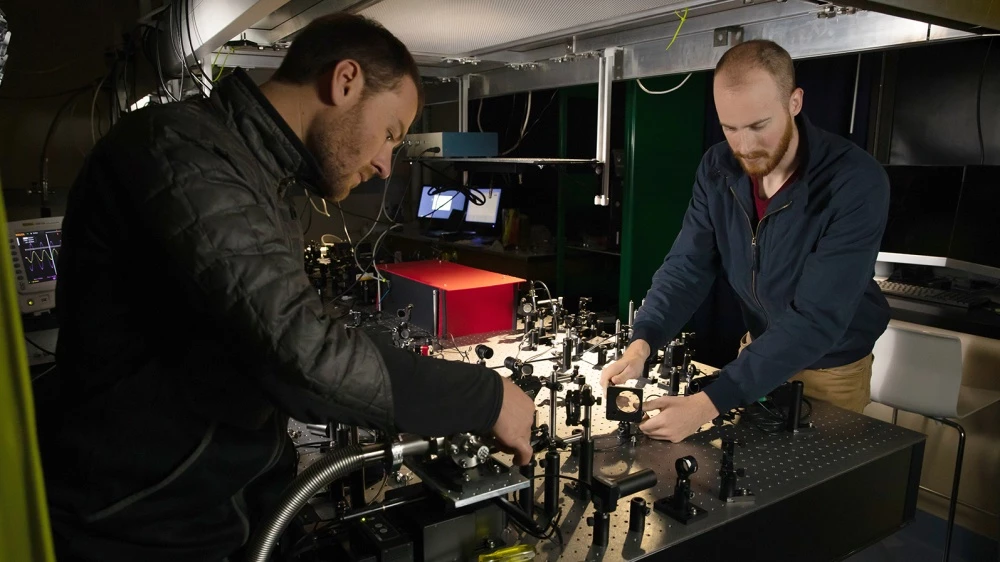Devices such as digital cameras electronically measure levels of high-energy light, and that's good enough for most of us. Now, however, scientists have developed a mechanical alternative that works with almost all types of light, making a broader range of applications possible.
Created by a team at the University of Oregon, the device is known as a "graphene nanomechanical bolometer," and it's sort of like a tiny trampoline … and also not unlike a drum.
The "bouncy" part is a sheet of graphene, which is a one-atom-thick material made up of linked carbon atoms. It's very thermally-conductive, and is stretched across a hole that's been etched into a piece of silicon. The whole thing is one tenth the width of a human hair.

When light of virtually any color strikes the graphene, the material very rapidly heats up and expands, causing its vibrational pitch to change. This is similar to the manner in which the tone of a drum changes, depending on the tension of its membrane. In fact, by tracking the extent to which the graphene membrane's pitch changes – electro-mechanically "listening" to its vibrations – it's possible to very precisely ascertain the amount of light that's hitting the bolometer.
It is now hoped that the technology could ultimately be used in applications such as astronomy and medical imaging, measuring long wavelengths of light such as infrared. These aren't detected as accurately by traditional electronic sensors. Additionally, the bolometer works at much higher ambient temperatures than such sensors – over 2,000 ºC (3,632 ºF) – increasing its possible uses.
"We hope this device will help scientists crack the mysteries of our sun and other stars, improve medical diagnostics through safer thermal X-ray imaging, and help firefighters see better in fires to save more lives," says team leader, Prof. Benjamín Alemán.
A paper on the research was recently published in the journal Nature Communications.
Source: University of Oregon




